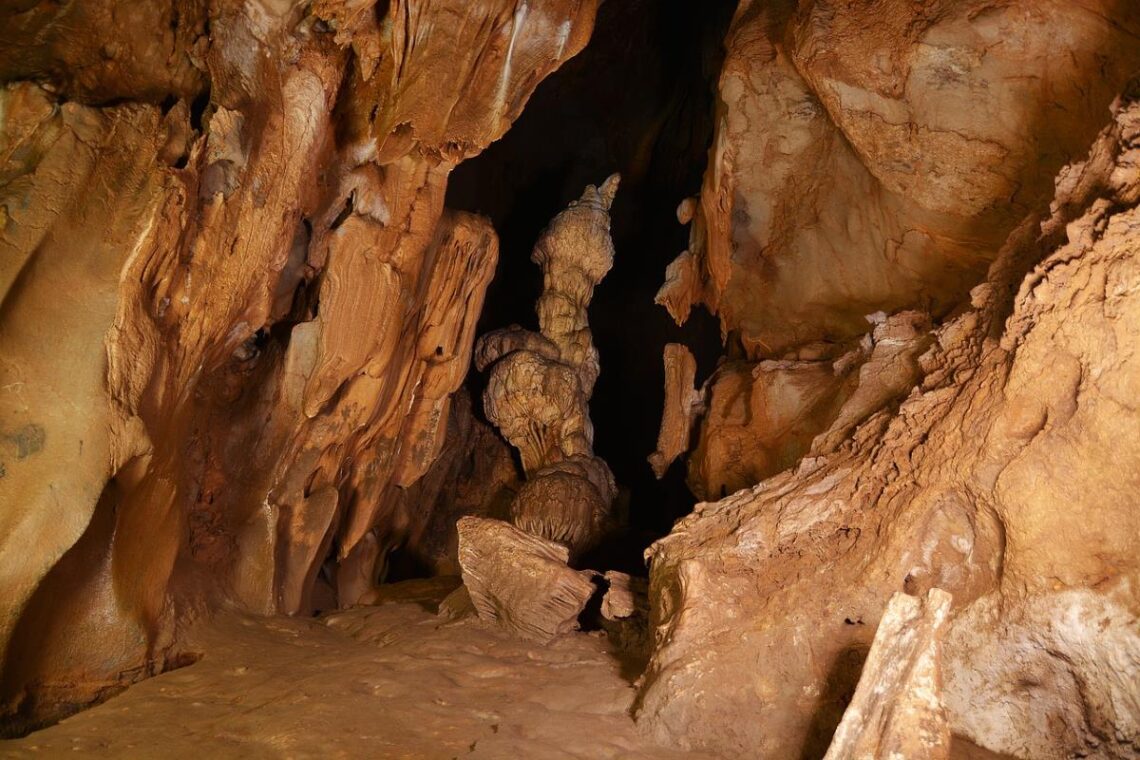Talgua Cave, known also as the ‘Cave of the Glowing Skulls’, is a cave located in the Olancho Valley, which is situated in Catacamas, a municipality in northeastern Honduras. The cave’s name may be said to be a misnomer, as the skulls do not actually glow on their own. Instead, the piles of human bones on the surface of the cave were coated over the centuries by a layer of calcium crystals. These crystals reflect light, thus giving the bones a glowing appearance.
The existence of the Talgua Cave is said to have been known by locals for generations. Nevertheless, the area where the ‘glowing skulls’ were found seems to have not been known by the outside world. Knowledge of its existence in modern times may be dated back only as far as 1994.
Archaeological Investigations
In April of that year, four young men from Catacamas, two Hondurans and two Americans, visited the Talgua Cave. Whilst they were exploring the cavern, they came across an opening and decided to investigate further. One of the men returned to the town to get a tall ladder, which they used to descend into the chamber. The men took some pictures, left the chamber undisturbed, and reported their discovery to George Hasemann, the director of archaeology at the Honduran Institute of Anthropology and History in Tegucigalpa, the capital of Honduras.
Near the entrance. (Public Domain)
Based on the archaeological investigations that were carried out at the site, it was determined that the chamber had been used by a pre-Columbian culture. Whilst the Mayans are arguably the best-known pre-Columbian civilization that occupied that region, it was determined that the people who had utilized the cave were not Mayans. Yet, it is unknown as to which non-Mayan culture these people belonged to. This is due to the fact that the style of the 20 undecorated ceramic bowls and two thin marble vessels found at the site could not be matched to that of any known non-Mayan cultures inhabiting the area which is today known as Honduras.

Talgua Cave. (Dennis Garcia/CC BY 3.0)
Burials in the Talgua Cave
The main highlight of the cave may be said to be the bones. It has been reported that 23 deposits were discovered in the Talgua Cave, almost all of which contained the remains of more than one person. The cave has been called an ossuary and was used as a place for secondary burials. Incidentally, evidence of caves being used as ossuaries has also been found in other parts of the region. It has been suggested that the bones of the dead were packed in cloth material before being transported from the primary burial site to this cave. Additionally, it has been speculated that these remains were brought in through an entrance which has since been lost.

Screenshot of replicas at the museum of Cave Talgua. EL CATRACHITO ECOTOURS, HONDURAS C.A./Facebook screenshot)
Initially, it was speculated that the burials in the Talgua Cave occurred sometime between 300 BC and 500 AD. Radio-carbon dating of ash samples and bone fragments have revealed that these estimations were way off. The results showed that the cave was in use sometime between 1400 BC and 800 BC, dates which are much older than what the investigators had first thought.
Re-evaluating Honduran History
Whilst many questions about the cave remain, the discovery of this burial site has forced archaeologists to re-evaluate the history of Honduras. For instance, the marble vessels found at the site were objects that required a high degree of skill to produce. This is because such vessels had to be chipped out from a single block of marble, and then smoothed by hand. Given the amount of effort needed to produce such vessels, they have been associated with the elite. Therefore, the discovery at Talgua Cave shows that social stratification, which is regarded as a feature of complex societies, had already occurred in Honduras at quite an early period of time.
Top image: Talgua Cave, Olancho, Honduras. Source: david diaz/CCO
By Wu Mingren
This article was first published in 2016, and was updated in Nov 2024.
